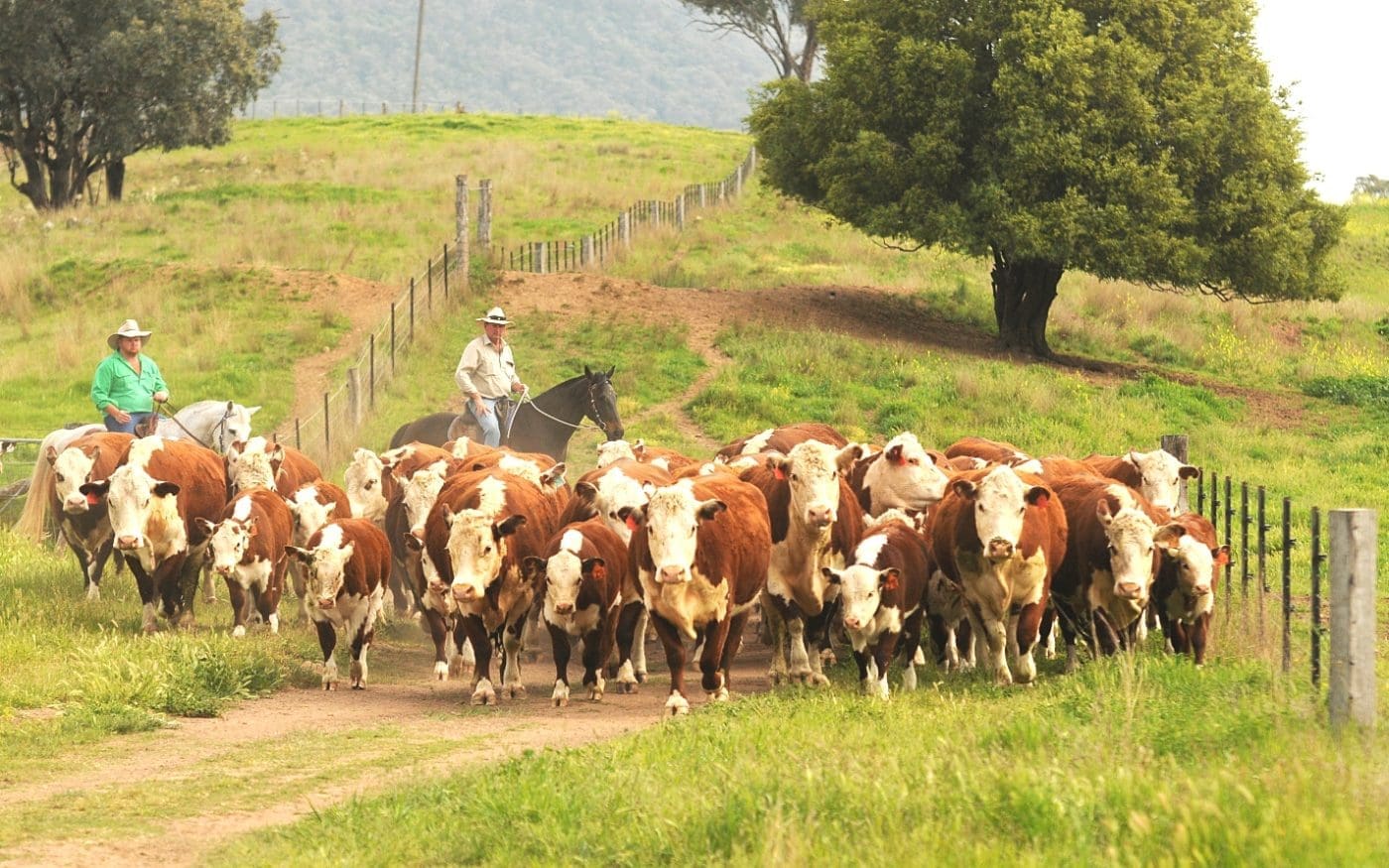
AS a consultant, I’m often asked by commercial cattle breeders: “How long should cows remain in the breeding herd?”
It’s a good question, as cow replacement rates directly impact the annual cash flow into a beef enterprise. As a general principal, I consider that cows should remain in a herd for as long as they are able to conceive within a set joining period and then go on to successfully raise a calf to weaning.
While that is a general guiding principal, there are obviously adjustments that do need to be made at times. I have a very ruthless approach to selection on temperament and encourage cows to be removed from the herd if they are aggressive or excessively flighty. There will always be individual cows culled from the herd for health issues, or as part of a more focused selection program where performance in the herd is monitored.
Overall, longevity in the herd is an important trait, and should be considered. It’s not uncommon to be asked by producers if longevity is a trait and if it can be selected for with a specific EBV.
One of the challenges with longevity is to determine why cows remain in a breeding herd for a period of time. Perhaps more tellingly, the question should be, why were cows removed from a herd earlier than others?
There are many reasons why cows are removed from breeding herds. In addition to culling on temperament or fertility, cows are culled on traits including structure, disease, low performance or even on appearance. The fact is, there can be a number of contributing factors that cause a producer to remove a cow from the herd earlier when compared to her similar-aged cohorts.
It is one of the reasons that make it very difficult to develop a single EBV for longevity. A recent newsletter from Southern Beef Technology Services (SBTS) highlighted the multiple factors associated with culling decisions.
For the past eight years, BreedPlan has offered producers the opportunity to record how females have been removed from a herd. The reasons cows were removed ranged from age through to fertility, structure, surplus heifers, poor temperament to accidental death.
These criteria, recorded in the Days to Calving component of BreedPlan, are designed to help identify if the reason a female was taken out of the herd was due to genetics or to other issues.
While the option to record this data has been available since 2013, there has been insufficient detail recorded in the system to develop a specific EBV.
Stayability
By comparison, the IGS recording system offers a Stayability EPD. This is calculated on the percentage of a sire’s offspring still expected to be in a herd at six years of age, after calving as a two-year-old. As a trait, IGS has identified that the Stayability EPD has a heritability of less than 0.2, which identifies the large environmental influence on the trait.
In many ways, it is perhaps questionable if there should be a single measure on longevity.
Considering that so many factors influence the time a cow will remain in a herd, as well as the low heritability of the trait, it may be more effective for producers to consider specific traits rather than a breeding value that is a composite of several traits.
The SBTS team suggest that direct selection using specific traits offers producers more opportunity to place pressure on specific issues.
It could be, as an example, that a leading cause of cow removal is due to low weaning rates. Through genetic selection, it makes more sense to focus on traits such as calving ease, birth weight or other fertility EBVs such as Gestation Length and Days to Calving.
One of the other challenges with a complex issue such as longevity is the risk that developing a composite EBV using a number of traits is the increased risk of antagonisms occurring that will lead to negative outcomes across the herd in general.
As heritability of the trait is already quite low, the risk of antagonisms occurring would further recue the heritability of possible longevity.
With such low levels of data recorded on cow disposal, it’s difficult to see how the genetic relationship between traits can be accurately understood or used to develop a reliable EBV for longevity.
The reality for the majority of beef producers is to recognise that the number of traits contributing to longevity is factored into the development of Breed Indexes. These consider the various traits that influence longevity including structure, fertility, and temperament.
Aside from selecting cows for removal on visual assessment, selecting replacement sires with the assistance of Index values will continue to be the way most producers address and manage longevity in their herds.
If it is possible, collecting data on the removal of cows from a herd may see a single longevity EBV developed, but that point remains some way off as yet.
 Alastair Rayner is the Principal of RaynerAg, an agricultural advisory service based in NSW. RaynerAg is affiliated with BJA Stock & Station Agents. He regularly lists and sell cattle for clients as well attending bull sales to support client purchases. Alastair provides pre-sale selections and classifications for seedstock producers in NSW, Qld and Victoria. He can be contacted here or through his website www.raynerag.com.au
Alastair Rayner is the Principal of RaynerAg, an agricultural advisory service based in NSW. RaynerAg is affiliated with BJA Stock & Station Agents. He regularly lists and sell cattle for clients as well attending bull sales to support client purchases. Alastair provides pre-sale selections and classifications for seedstock producers in NSW, Qld and Victoria. He can be contacted here or through his website www.raynerag.com.au
